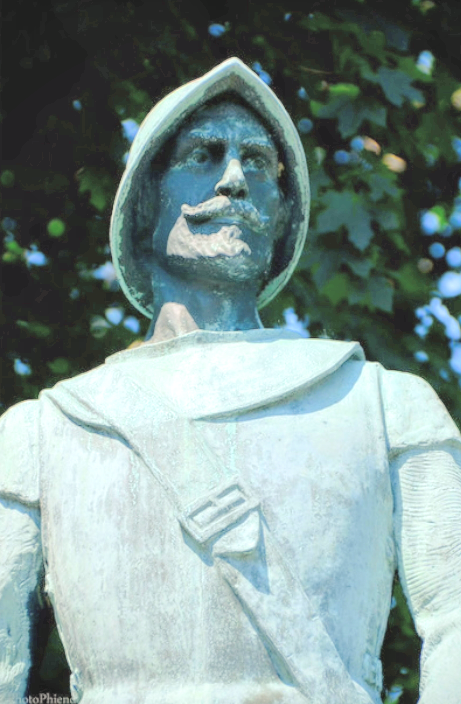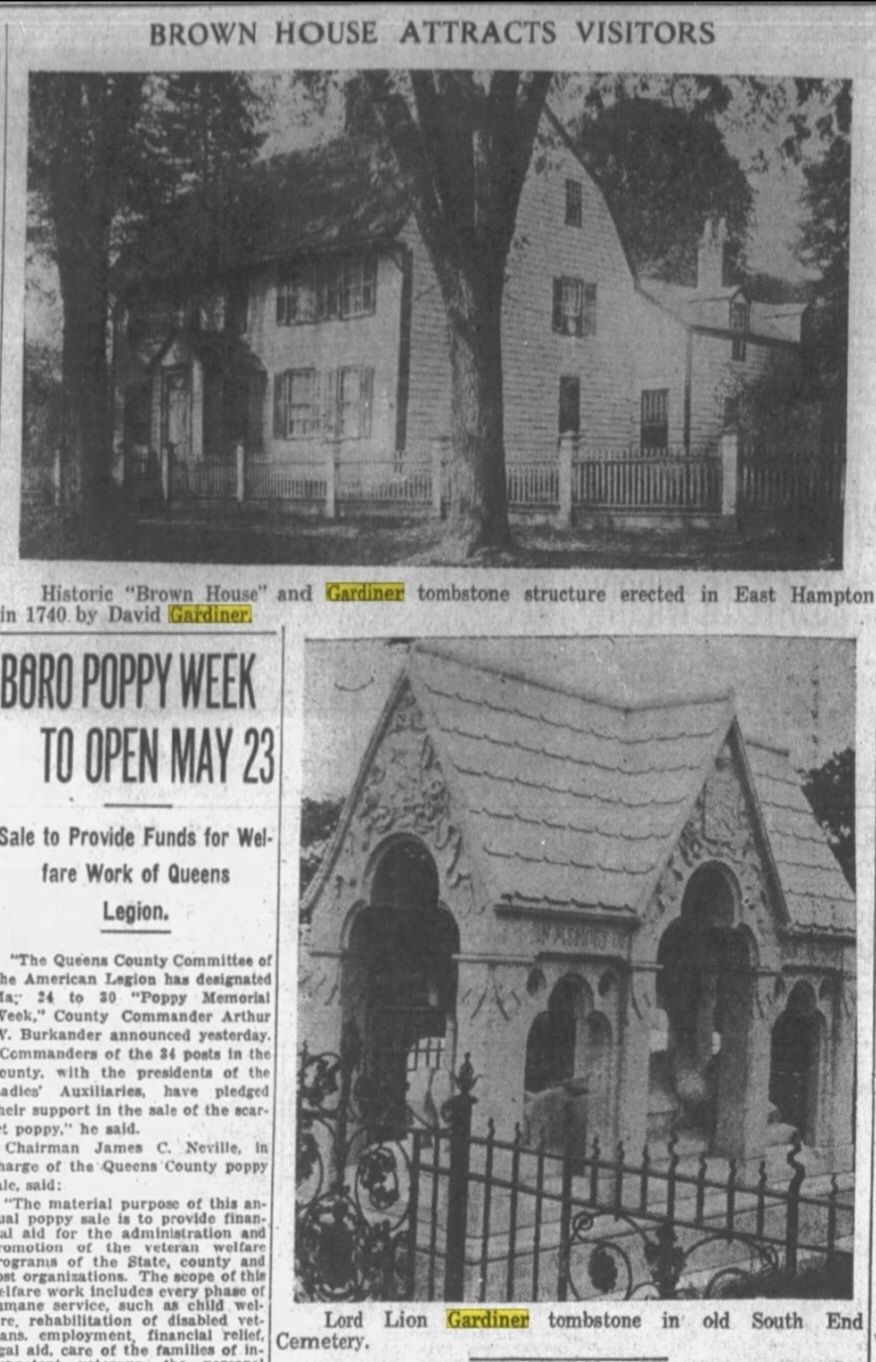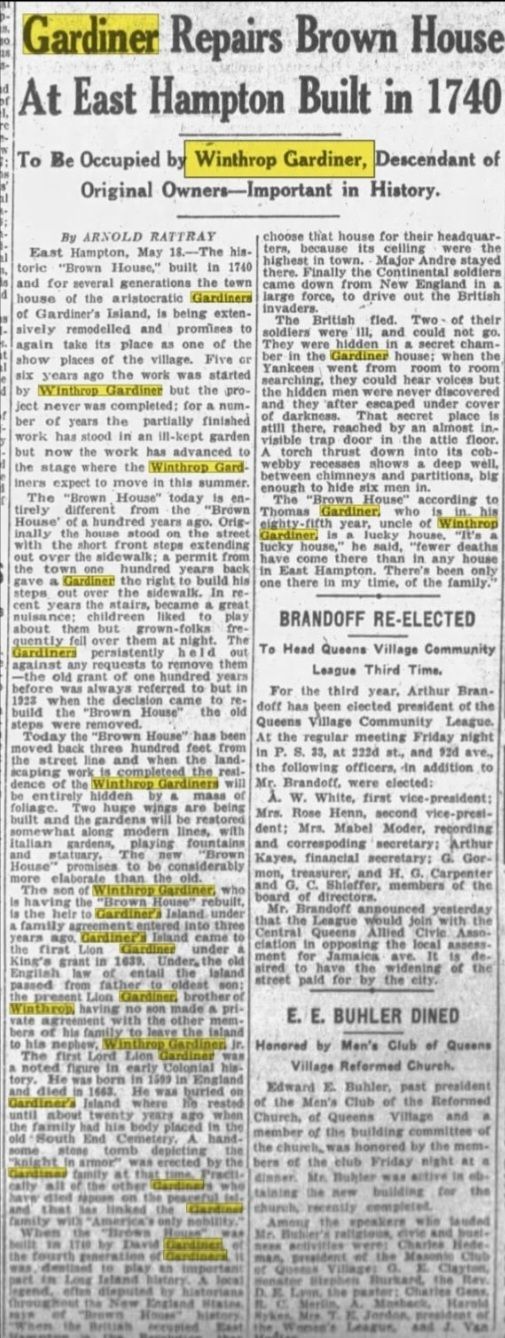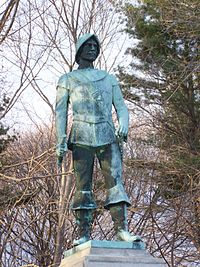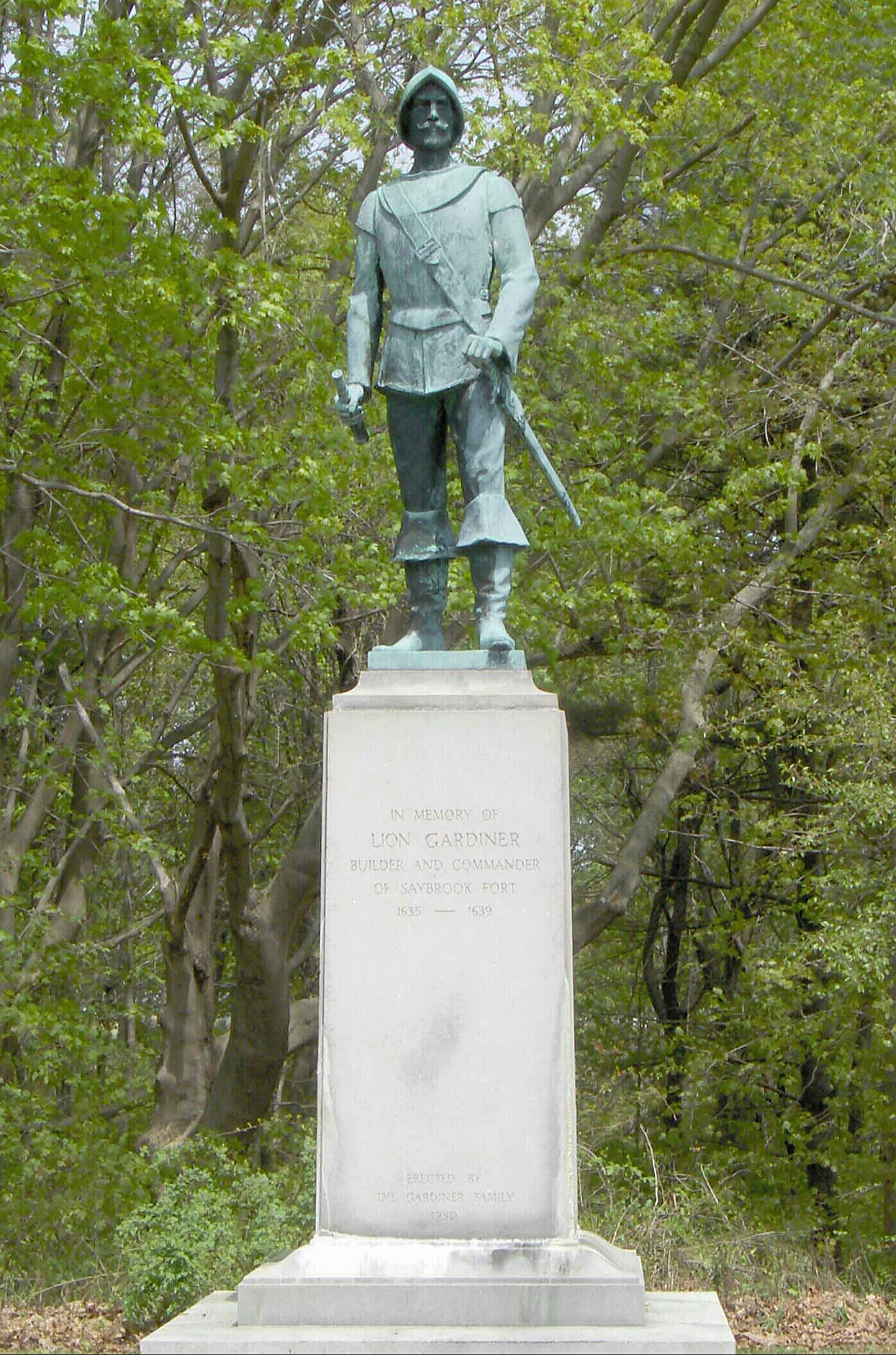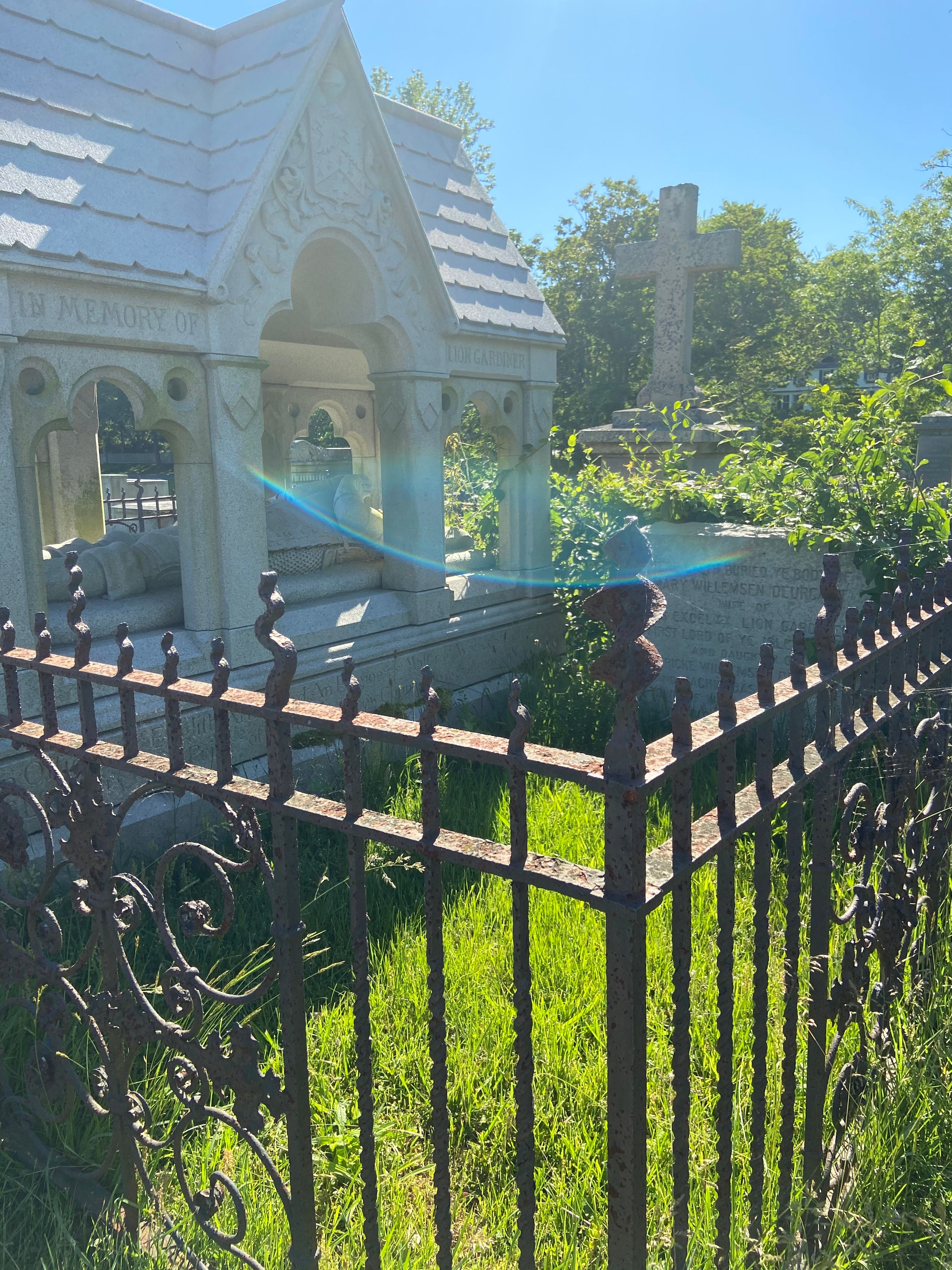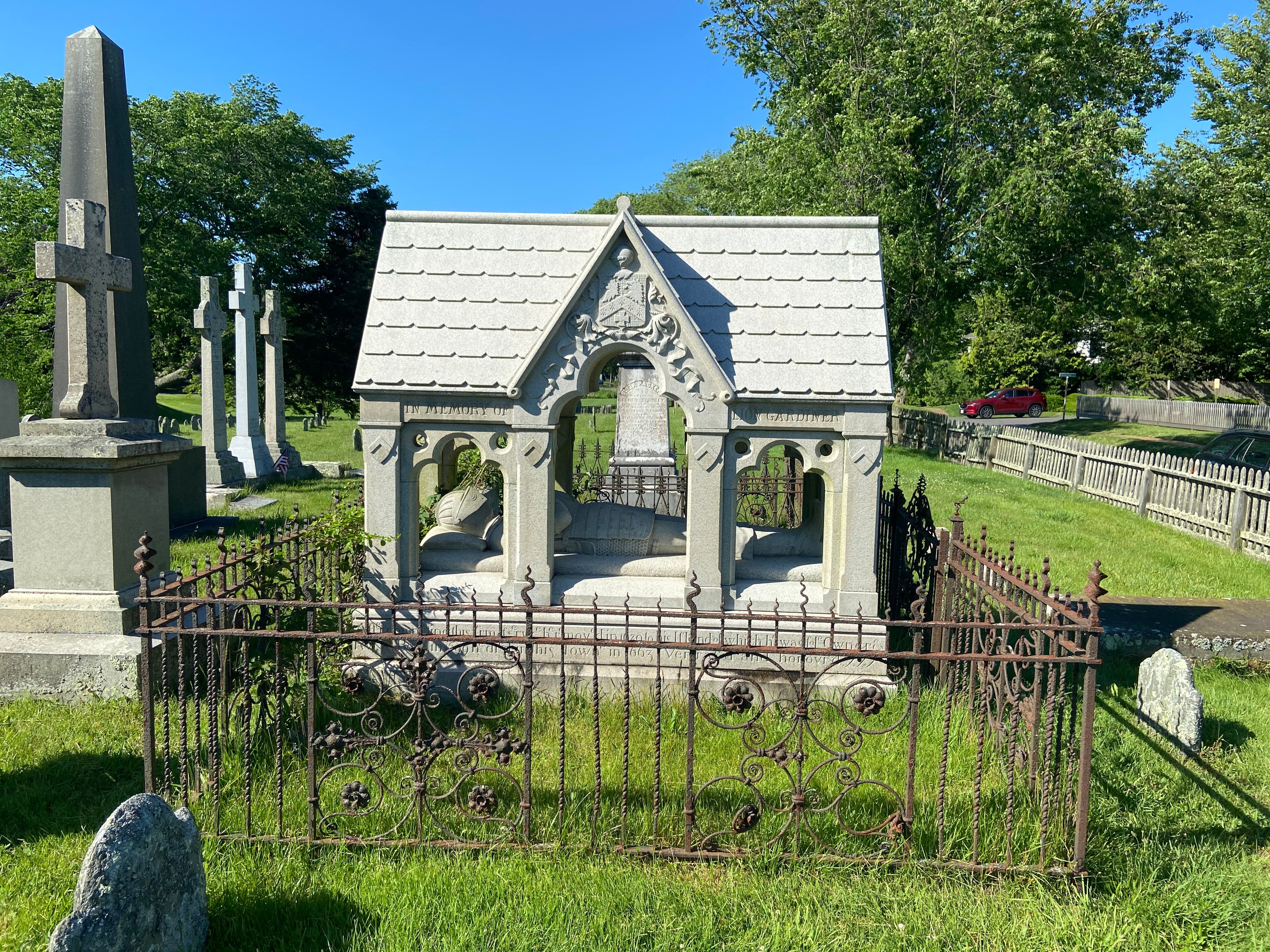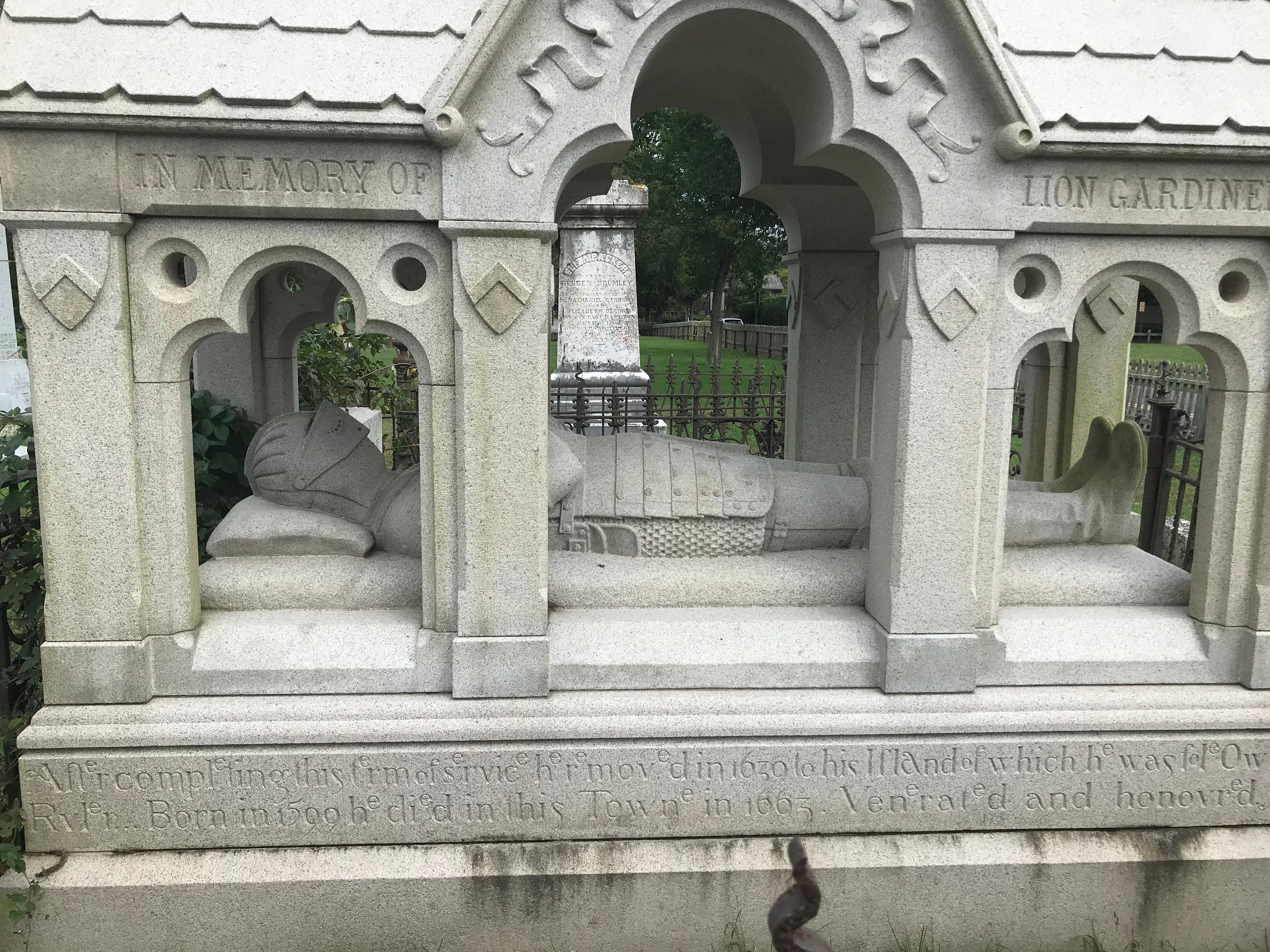By July 10, 1635, all preparations had been made. The Batchelor, a 25 ton north sea bark made of oak, reached Holland from London and took Lion, his wife, her maid (Elizabeth Cole), and Lion's 40 yr. old work master (William Job) on board. The ship master, Jonathan Wibber,set sail for London to get supplies. The ship agent, Edward Hopkins, complained of getting a crew that it was not easy "to gett any att this tyme to goe in so small a vessell and therefore I was forced to take some that otherwise I would not have medled with att all." Finally, the passengers, which numbered 7, got off to sea at Gravesend, 5 weeks after leaving Woerden Holland. They finally arrived in Boston after perilous seas and hope of safe arrival had been given up. Lion settled in what was to become Connecticut, where his son David was the first child to be born. He soon became sick of the politics of New England and bought Gardiner Island from the Indians. He farmed the island for 14 years, living in close friendship with the Montaukett Indians, and genuinely loving them. His daughter Elizabeth was the first white child born in New York and was also her father's favorite. This veteran of wars of Princes of Orange began one of the few families to ever own a private paradise. In 1892, the island was still being handed down from father to son, just as Lion wished.
Lion was a Lieut. the Pequot Indian War. David and Mary were born during his Command at Fort Saybrook. David being the first English Child born in Conn. It is said he bought the Isle of Wright " Gardiners Island" from the Indians. He lived there for 14 years and left to live in Easthampton where he had a lot to do with the Indians in the area.
Gardiner's Island is a small island in the Town of East Hampton, New York, in Eastern Suffolk County. It is located in Gardiner's Bay between the two peninsulas at the east end of Long Island. It is 6 miles (9.7 km) long, 3 miles (4.8 km) wide and has 27 miles (43 km) of coastline.
The island has been owned by the Gardiner family and their descendants since 1639 when Lion Gardiner purchased it from the Montaukett chief Wyandanch.[1] At 5.19 square miles (13.4 km2) it is one of the largest privately owned islands in the United States, and is slightly smaller than Naushon Island in Massachusetts, owned by the Forbes family.
In addition to the family mansion and the Gardiners Island Windmill, structures on the island include a private airstrip on the south side, and a carpenter's shed said to have been built in 1639.
The shed's claim to being the oldest surviving wood-frame structure in New York state is disputed by some. No primary sources authenticating its construction have been produced, only a description by Robert David Lion Gardiner in a 1976 documentary about the island.[6][7] An earlier source that describes the settlement and early life on the island makes no mention of the shed.
The island was settled by Lion Gardiner in 1639, who moved there with his family from the Connecticut Colony. He reportedly purchased the island from the local Montaukett people for "a large black dog, some powder and shot, and a few Dutch blankets."[8] The Indians called the island Manchonake, while Gardiner initially called it Isle of Wight, because it reminded him of the Isle of Wight in England.[9] The Montauketts gave Gardiner the title, at least in part because of his support for them in the Pequot War.
The island was not part Connecticut Colony and Colony of Rhode Island and Providence Plantations of the British, nor the Dutch colony of New Netherlands, but evidently fell under the jurisdiction of the Earl of Stirling, William Alexander, who had been given Long Island by the King of England in 1636 and required Gardiner to gain his approval of the land grant through his agent James Farrett. It has been privately owned by Gardiner's descendants for 384 years.
By July 10, 1635, all preparations had been made. The Batchelor, a 25 ton north sea bark made of oak, reached Holland from London and took Lion, his wife, her maid (Elizabeth Cole), and Lion's 40 yr. old work master (William Job) on board. The ship master, Jonathan Wibber,set sail for London to get supplies. The ship agent, Edward Hopkins, complained of getting a crew that it was not easy "to gett any att this tyme to goe in so small a vessell and therefore I was forced to take some that otherwise I would not have medled with att all." Finally, the passengers, which numbered 7, got off to sea at Gravesend, 5 weeks after leaving Woerden Holland. They finally arrived in Boston after perilous seas and hope of safe arrival had been given up. Lion settled in what was to become Connecticut, where his son David was the first child to be born. He soon became sick of the politics of New England and bought Gardiner Island from the Indians. He farmed the island for 14 years, living in close friendship with the Montaukett Indians, and genuinely loving them. His daughter Elizabeth was the first white child born in New York and was also her father's favorite. This veteran of wars of Princes of Orange began one of the few families to ever own a private paradise. In 1892, the island was still being handed down from father to son, just as Lion wished.
Lion was a Lieut. the Pequot Indian War. David and Mary were born during his Command at Fort Saybrook. David being the first English Child born in Conn. It is said he bought the Isle of Wright " Gardiners Island" from the Indians. He lived there for 14 years and left to live in Easthampton where he had a lot to do with the Indians in the area.
Gardiner's Island is a small island in the Town of East Hampton, New York, in Eastern Suffolk County. It is located in Gardiner's Bay between the two peninsulas at the east end of Long Island. It is 6 miles (9.7 km) long, 3 miles (4.8 km) wide and has 27 miles (43 km) of coastline.
The island has been owned by the Gardiner family and their descendants since 1639 when Lion Gardiner purchased it from the Montaukett chief Wyandanch.[1] At 5.19 square miles (13.4 km2) it is one of the largest privately owned islands in the United States, and is slightly smaller than Naushon Island in Massachusetts, owned by the Forbes family.
In addition to the family mansion and the Gardiners Island Windmill, structures on the island include a private airstrip on the south side, and a carpenter's shed said to have been built in 1639.
The shed's claim to being the oldest surviving wood-frame structure in New York state is disputed by some. No primary sources authenticating its construction have been produced, only a description by Robert David Lion Gardiner in a 1976 documentary about the island.[6][7] An earlier source that describes the settlement and early life on the island makes no mention of the shed.
The island was settled by Lion Gardiner in 1639, who moved there with his family from the Connecticut Colony. He reportedly purchased the island from the local Montaukett people for "a large black dog, some powder and shot, and a few Dutch blankets."[8] The Indians called the island Manchonake, while Gardiner initially called it Isle of Wight, because it reminded him of the Isle of Wight in England.[9] The Montauketts gave Gardiner the title, at least in part because of his support for them in the Pequot War.
The island was not part Connecticut Colony and Colony of Rhode Island and Providence Plantations of the British, nor the Dutch colony of New Netherlands, but evidently fell under the jurisdiction of the Earl of Stirling, William Alexander, who had been given Long Island by the King of England in 1636 and required Gardiner to gain his approval of the land grant through his agent James Farrett. It has been privately owned by Gardiner's descendants for 384 years.
Gravesite Details
This tomb was built in 1886. It was designed by James Renwick, Jr.








